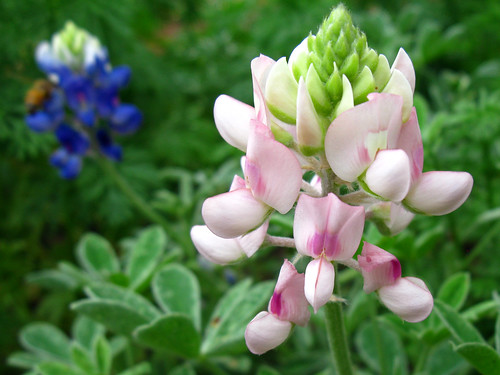My roses rarely look like photos in rose books: you know, with hundreds of flowers cascading over a dense green bush. So my China rose, ‘Ducher’, is taking my breath away right now every time I catch a glimpse of it. I can’t quite capture the effect because the white flowers reflect the light in such a way that it looks like a bush covered in tissue paper flowers.
‘Ducher’ is said to be the only white China rose. (It’s pronounced “doo shay” according to the Aggie’s Earthkind Roses site. I’m glad they include that because I’m always in a muddle over French names.) They are ivory white, meaning they have a very slight yellow, rather than pink, tint. Depending on the light, some flowers seem to glow from within. The flowers are about 3 inches across and rather flat. They have a lemon-y scent. The petals fall rapidly when the flower is finished so there are never ugly brown flowers drooping on the plant as is sometimes a problem with white roses.

The bush is very dense and twiggy and looks nice even when it’s not blooming. The leaves are a flat medium green. New growth is very red. The stems are almost thornless.
Garden History
This is my second ‘Ducher’ rose. I planted the first one on the south side of the yard. It only got winter sun and so bloomed well in winter. Several years ago it succumbed suddenly to cane dieback. When my neighbor built a wooden privacy fence on the north side of my yard, I was able to begin taking out the nandina hedge. I decided I wanted to replace the roses I’d lost in the 2006 drought. ‘Ducher’ was the first replacement–the only rose I’ve bought twice.

Rose ‘Ducher’. March 28, 2008. Austin, TX
The new situation has suited it. I thought the first one was a nice little rose before. This one is like the snow queen. These two photos were taken almost exactly a year a part and it’s doubled in size in every direction. The Antique Rose Emporium says that ‘Ducher’ is smaller than most China roses and a good candidate for containers. With only my experience of my first ‘Ducher’ I would have agreed. This one’s now about 4 feet tall and 5 feed wide. You’d need a pretty large container.

Rose ‘Ducher’. March 21, 2009 Austin, TX
This year ‘Ducher’ began blooming on February 6th and each week has become more and more laden with flowers. These last two weeks it’s upstaged everything else in the garden. I really love ‘Ducher’. Although the individual flowers are not as arresting as ‘Souvenir de la Malmaison’ the overall effect of the bush is very attractive. And it’s not at all fussy. It doesn’t need a lot of pruning and it seems resistant to most diseases and pests. Basically all I’ve had to do is plant it where it got enough sunlight and make sure it got enough water. In a year when most of my plants were simply surviving the drought, ‘Ducher’ has been thriving.





























